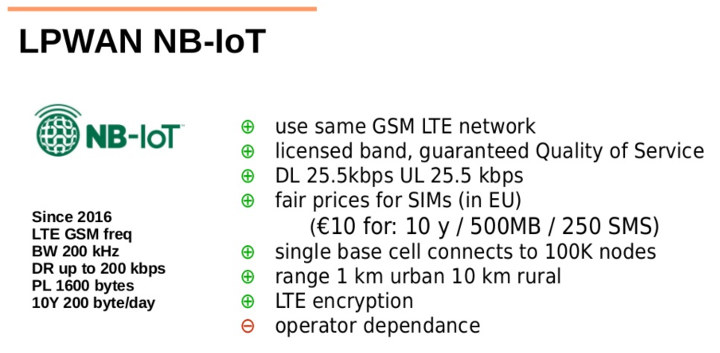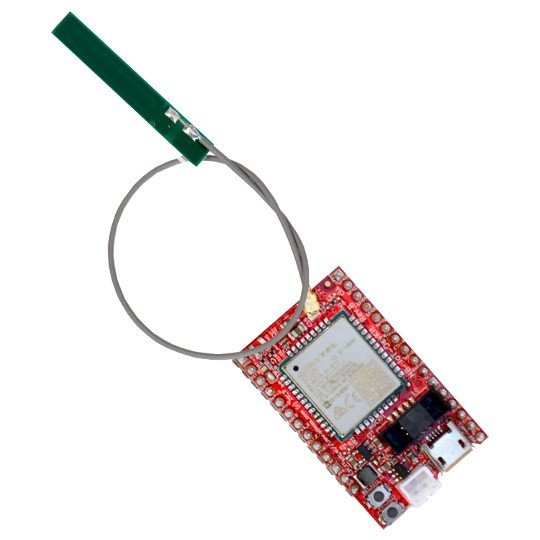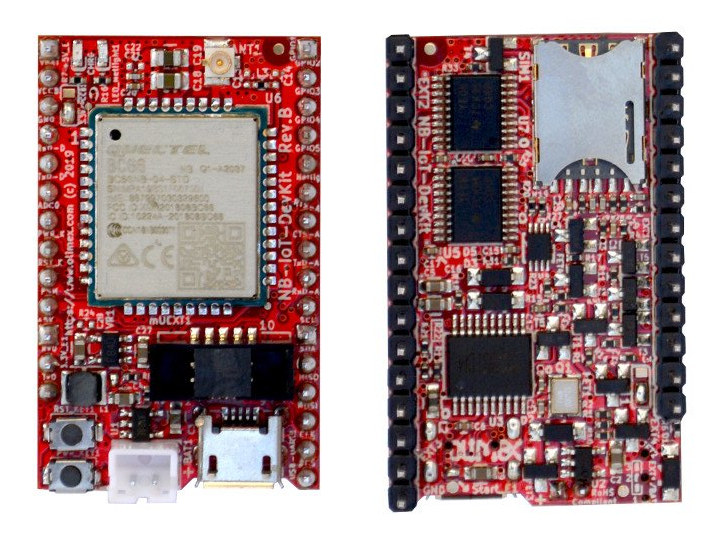There are three LPWAN standards currently dominating the space LoRaWAN, NB-IoT, and Sigfox. In a recent presentation, Olimex explains NB-IoT (aka LTE Cat NB1) offers several advantages over LoRaWAN and Sigfox which include:
- Higher speeds of up to 25.5 kbps (UL/DL)
- Single GSM base station can handle up to 100 000 NB-IoT nodes
- Single GSM base station can cover up to 10-100km range in rural environments, and 1 to 10km in urban settings
- Lasts up to 10 years on a Lithium 3V battery if less than 200 bytes are sent per day
 The main disadvantage they listed was operator dependence, as you rely on the operator for coverage, and anything related to connectivity. In Bulgaria in particular, they found out it was not easy to get an NB-IoT SIM card activated, and the operator may shut you off without notice. For reference here in Thailand, last time I checked I could not buy a SIM card for evaluation with my own hardware, and instead, I would have had to buy a ~$65 development kit to get an NB-IoT SIM card.
The main disadvantage they listed was operator dependence, as you rely on the operator for coverage, and anything related to connectivity. In Bulgaria in particular, they found out it was not easy to get an NB-IoT SIM card activated, and the operator may shut you off without notice. For reference here in Thailand, last time I checked I could not buy a SIM card for evaluation with my own hardware, and instead, I would have had to buy a ~$65 development kit to get an NB-IoT SIM card.
Olimex made this presentation about NB-IoT because they recently developed an NB-IoT devkit based on the Arduino compatible Quectel BC66 module.
- NB-IoT Connectivity
- Quectel BC-66 with worldwide GSM bands coverage
- 25.5 kbps uplink and downlink
- nano-SIM card slot
- Expansion
- 10-pin micro UEXT connector
- 16-pin + 13-pin header with level shifters for 5x GPIOs, I2C, SPI, UART
- U.FL antenna connector
- Misc – Status LEDs, reset and user buttons
- Power Supply – 5V via micro USB port; 2-pin header for LiPo battery
- Dimensions – 40×25 mm

Olimex NB-IoT-Devkit is now available for 18 Euros without antenna, but most people will likely buy the 19 Euros kit with the board and one antenna.

Jean-Luc started CNX Software in 2010 as a part-time endeavor, before quitting his job as a software engineering manager, and starting to write daily news, and reviews full time later in 2011.
Support CNX Software! Donate via cryptocurrencies, become a Patron on Patreon, or purchase goods on Amazon or Aliexpress





